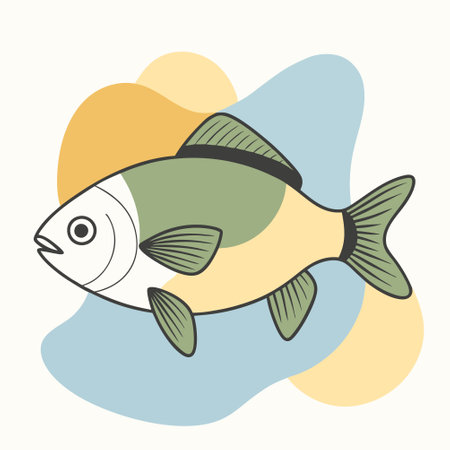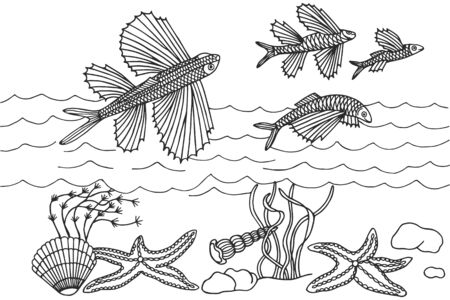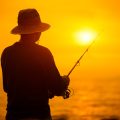Introduction to Catch and Release in the UK
Across the rolling rivers of Scotland, tranquil lakes in Wales, and picturesque canals winding through English countryside, catch and release angling has become a defining feature of modern British fishing culture. Historically, fishing in the UK was rooted in tradition—often focused on bringing home a fresh catch for supper or local markets. However, as environmental awareness has grown and conservation efforts have taken centre stage, catch and release has surged in popularity among both seasoned anglers and newcomers alike. This approach not only allows more people to enjoy the pleasures of fishing but also ensures that native fish populations remain healthy for generations to come. From family-friendly outings on the River Thames to competitive fly-fishing events in the Lake District, this practice reflects a nationwide shift towards sustainable recreation. Understanding the science behind catch and release is now essential for anyone wishing to participate responsibly in Britain’s beloved pastime.
Understanding Fish Physiology and Welfare
When it comes to catch and release angling in the UK, a solid understanding of fish physiology and welfare is essential for preserving our cherished waterways. British anglers encounter a diverse array of freshwater species, such as pike, perch, carp, and barbel, as well as saltwater favourites like bass, pollock, and mackerel. Each species responds differently to the stressors associated with being caught, handled, and released.
The Science of Stress and Injury in Fish
Fish experience stress when removed from their natural environment, especially during capture. This stress can be physiological—such as increased lactic acid levels due to struggling—or physical, including scale loss or hook wounds. Prolonged exposure to air can further compromise gill function and lead to lower survival rates post-release.
Common Stressors Encountered by UK Fish Species
| Stressor | Description | Affected Species (UK Examples) |
|---|---|---|
| Handling Time | Lengthy handling increases stress hormones | Trout, Carp, Bass |
| Air Exposure | Gills dry out quickly when exposed to air | Pike, Salmon, Pollock |
| Hook Placement | Deep hooking causes more injury than lip hooking | Barbel, Perch, Mackerel |
| Water Temperature | Higher temps reduce oxygen and increase mortality risk | Bream, Zander, Flounder |
Species-Specific Recovery Insights
British freshwater species like barbel and chub are known for resilience but still require gentle handling. Saltwater species such as bass may recover more slowly from exhaustive fights. Understanding these nuances ensures that each fish’s welfare is prioritised throughout the catch and release process.
Key Takeaways for Anglers:
- Avoid excessive handling and keep fish wet wherever possible.
- Minimise air exposure—ideally under ten seconds.
- Use barbless hooks to reduce injury risk.
- Release fish back into the water promptly and carefully.
This scientific awareness not only helps maintain healthy fish stocks but also preserves the joy of angling for generations to come across Britain’s rivers, lakes, and coasts.

3. Best Practices for Ethical Angling
When it comes to catch and release fishing in the UK, adopting best practices is essential for safeguarding the welfare of our native fish species. Seasoned British anglers and fisheries experts recommend a combination of thoughtful techniques and specialised equipment to ensure that released fish have the best chance of survival. One of the most widely endorsed methods is the use of barbless hooks. These hooks make it far easier to unhook fish quickly and gently, reducing tissue damage and stress during handling—a small but significant change that can make a world of difference to the fish’s recovery.
Equally important is the way anglers handle their catch. It’s vital to keep the fish wet at all times; using a landing net with a soft, knotless mesh helps support the fish without removing its protective slime layer. When lifting fish for unhooking or photography, always wet your hands first and avoid squeezing or holding them vertically by the jaw, as this can cause internal injuries. UK guidelines encourage anglers to unhook their catch while it remains in the water whenever possible—this “in-water release” approach minimises exposure to air and maximises the fish’s chances of a swift return to its natural environment.
Additional recommendations include using tackle that matches the target species, enabling a quicker play and reducing exhaustion, which can be fatal for some fish. Carrying tools such as long-nosed pliers or forceps allows for efficient hook removal, while having a suitable unhooking mat protects larger specimens on the bank. Ultimately, ethical angling isn’t just about following rules—it’s about respecting the wild places we visit and preserving Britain’s rich angling heritage for future generations.
4. Legal Regulations and Guidance in the UK
When it comes to catch and release angling, the UK has implemented a robust framework of laws and guidelines to ensure fish welfare is at the heart of every fishing experience. Understanding these regulations is essential for anyone keen on responsible angling, whether youre casting a line in the Lake District or along the banks of the River Thames.
Key UK Fishing Laws
The foundation of responsible angling in the UK begins with adherence to national legislation. All anglers must possess a valid Environment Agency rod licence when fishing for salmon, trout, freshwater fish, smelt, or eel in England (and Wales). Closed seasons, size limits, and bag limits are strictly enforced to protect vulnerable species during spawning periods and to maintain healthy fish stocks.
| Law/Regulation | Description | Application |
|---|---|---|
| Rod Licence | Required for all freshwater fishing | England & Wales |
| Closed Seasons | No fishing during breeding periods for certain species | Varies by region & species |
| Bag & Size Limits | Limits on number/size of fish kept per day | Nationwide |
| No Keepnets for Salmonids | Bans keeping trout/salmon in nets except under special circumstances | All waters |
Environment Agency Advice
The Environment Agency (EA) plays a pivotal role in promoting sustainable angling practices. Their guidance covers everything from handling techniques—such as wetting your hands before touching fish—to recommendations for using barbless hooks to minimise injury. The EA also encourages anglers to return fish promptly and avoid removing them from the water whenever possible. Regular updates and local notices are published to keep anglers informed about any temporary restrictions or emerging environmental concerns.
Best Practice Guidelines from the EA:
- Use appropriate tackle for target species to reduce playing time.
- Minimise air exposure by unhooking fish in the water.
- Avoid angling during extreme weather conditions that could stress fish populations.
- Report incidents of pollution or illegal fishing activities promptly.
Local Club Rules and Waterside Byelaws
Beyond national laws, many local angling clubs and fisheries have their own set of rules designed to further enhance fish welfare. These often include additional net bans, compulsory use of unhooking mats, or seasonal closures specific to certain lakes or rivers. Checking local guidelines before you visit ensures you stay within the law while enjoying your day out on the bank.
Summary Table: Regulatory Sources and Their Focus Areas
| Source | Main Focus Areas |
|---|---|
| UK Law (Statutory) | Licensing, closed seasons, size/bag limits, protected species |
| Environment Agency Guidance | Sustainable practices, welfare advice, emergency alerts |
| Local Clubs/Byelaws | Extra protection measures, site-specific rules, equipment requirements |
This comprehensive legal and advisory framework reflects the UKs commitment to balancing recreational angling with safeguarding aquatic life. Staying up-to-date with these regulations not only protects our treasured waterways but also ensures everyone can enjoy fishing responsibly for generations to come.
5. Community Initiatives and Conservation Efforts
Across the British countryside, the spirit of stewardship for our rivers and lakes shines through the dedicated work of local angling clubs, environmental charities, and wildlife trusts. These groups play a pivotal role in promoting fish welfare, not only by sharing best practices in catch and release but also by fostering a culture of respect for aquatic life among both new and seasoned anglers.
Grassroots Action by Angling Clubs
Many traditional British angling societies take pride in their heritage while embracing modern conservation science. Local clubs often organise workshops on humane handling techniques, distribute leaflets with clear guidance on proper unhooking methods, and even run junior angler sessions to instil a strong conservation ethos from an early age. Such activities ensure that the next generation of anglers understands the importance of safeguarding fish stocks for years to come.
Wildlife Trusts and River Care
The UK’s network of wildlife trusts actively supports river restoration projects that create healthier habitats for native fish species. By removing barriers to migration, restoring spawning grounds, and monitoring water quality, these organisations help underpin sustainable fisheries. Their collaborative efforts with landowners and local communities encourage everyone to get involved in protecting cherished waterways.
Charities Championing Sustainable Practices
Charities like the Angling Trust and Salmon & Trout Conservation UK lead national campaigns focused on responsible angling. They provide resources for sustainable gear choices—such as barbless hooks—and promote voluntary codes of conduct that go beyond legal requirements. Through public outreach events and educational programmes, they highlight how everyday choices can make a real difference to fish welfare.
A Countryside United by Conservation
Together, these community-led initiatives create a network of knowledge-sharing and support across Britain’s picturesque waterscapes. Whether you’re fishing a quiet Cotswold stream or casting along the banks of the Tweed, you’ll find that respect for nature is at the heart of every true British angling experience—a legacy built not just on tradition but also on science-based care for our aquatic neighbours.
6. Enhancing Your Catch and Release Experience
Embarking on a catch and release angling trip in the UK offers more than just the thrill of the chase—it’s an opportunity to connect with nature and contribute to the preservation of British waterways. To make your outing both enjoyable and responsible, consider these practical tips designed for UK anglers keen on safeguarding fish welfare.
Choose the Right Equipment
Select barbless hooks, which make unhooking quicker and less stressful for the fish. Use a soft, knotless landing net to minimise scale and slime damage. Lightweight tackle matched to your target species helps ensure swift play and reduces exhaustion for the fish.
Handle Fish with Care
Always wet your hands before handling any catch, as this preserves their protective slime coat. Keep fish in the water as much as possible when unhooking, and support them gently if a photo is necessary—make it quick, then return them promptly.
Time and Technique Matter
Avoid angling during extreme weather conditions or spawning periods, as fish are more vulnerable. Play your catch efficiently without prolonged struggle, then revive tired fish by holding them upright in the current until they swim away under their own steam.
Respect Local Regulations
The UK boasts a rich tapestry of fishing locations—from tranquil chalk streams to rugged Scottish lochs—each governed by specific bylaws. Familiarise yourself with local rules regarding catch limits, permitted gear, and closed seasons to protect native stocks.
Create Lasting Memories Responsibly
Packing a flask of tea, donning your waterproofs, and sharing stories with fellow anglers are all part of a classic day out on British waters. By embracing best practice catch and release techniques, you’ll help ensure that future generations can enjoy these treasured experiences too—making each outing not only memorable but meaningful.

